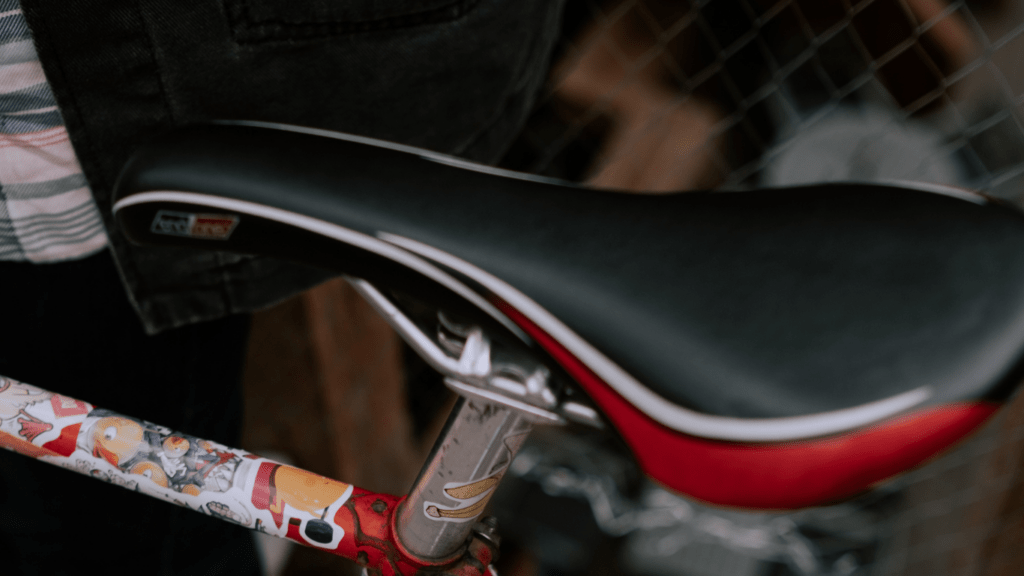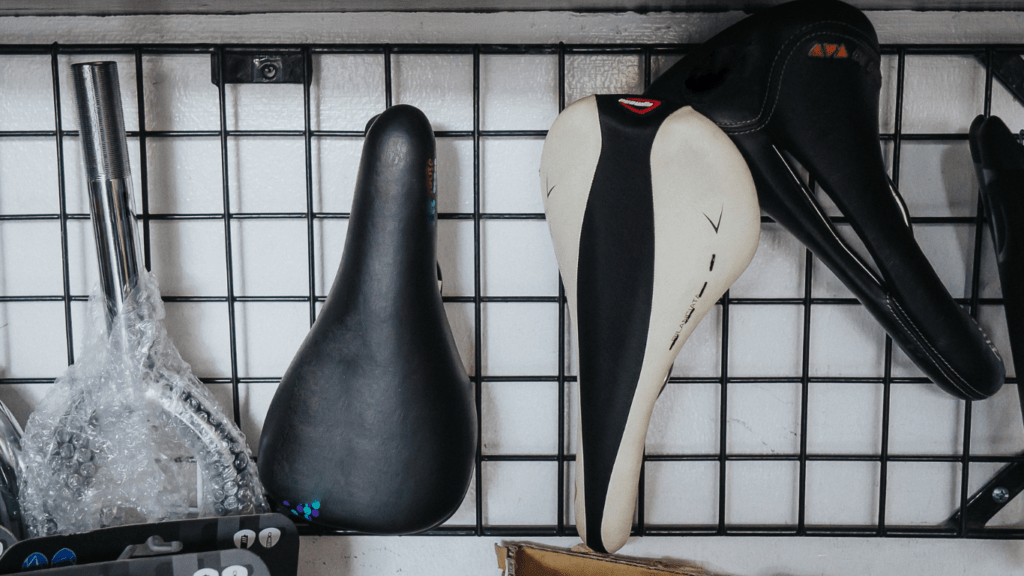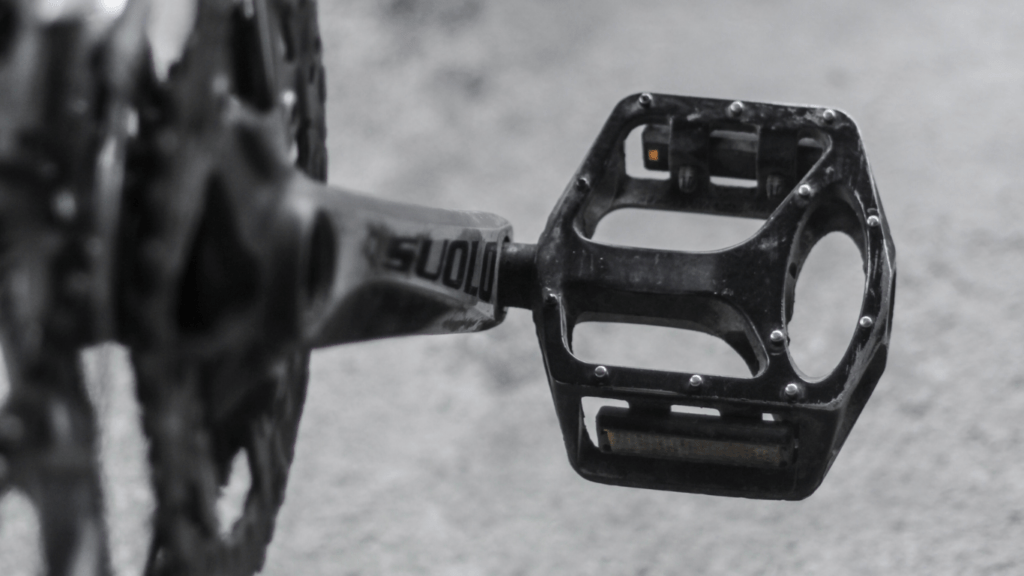Understanding the Importance of a Good Bike Saddle
A good bike saddle is essential for both comfort and performance during rides. A proper saddle fit can also prevent injuries and enhance your overall biking experience.
Why Comfort Matters
Comfort in a bike saddle impacts your willingness to spend time riding. Uncomfortable saddles cause pain and create pressure points, leading many riders to cut their rides short.
Saddles with padding help absorb shocks from uneven surfaces, ensuring a smoother ride. A well-chosen saddle enhances enjoyment and boosts the likelihood of riding regularly.
Impact on Performance and Health
An optimal saddle directly affects cycling performance. Riders using poorly fitted saddles often develop poor posture, which hinders efficiency and speed.
Over time, discomfort can lead to injuries in the lower back, hips, or knees. A correctly fitted saddle supports proper riding posture and minimizes health risks, allowing riders to perform at their best and recover faster after long rides.
According to a study published in the Journal of Sports Sciences, cyclists with appropriate saddles experienced fewer instances of overuse injuries.
Understanding the importance of a good bike saddle ensures that rides are both enjoyable and beneficial for health and performance.
Types of Bike Saddles
The perfect bike saddle depends on the type of riding. Different bike disciplines require tailored designs to optimize comfort and performance.
Road Bike Saddles
Road bike saddles are streamlined for speed and efficiency. They often have minimal padding and a narrow shape to reduce friction and improve aerodynamics.
The goal is to support the sit bones while allowing full leg extension. Manufacturers like Fizik and Selle Italia offer specialized road saddles that meet these criteria.
Mountain Bike Saddles
Mountain bike saddles focus on durability and support during off-road adventures. They usually have more padding than road saddles to absorb shocks from rough terrains.
A broader shape provides better support during steep climbs and descents. Brands like WTB and SDG Components design saddles with rugged materials to withstand harsh conditions.
Hybrid and Commuter Bike Saddles
Hybrid and commuter bike saddles balance comfort and efficiency. These saddles generally feature moderate padding and a slightly wider shape to accommodate various riding positions.
The design respects both short commutes and longer rides. Companies such as Brooks and Bontrager produce hybrid saddles that offer this blend of comfort and practicality.
Key Features to Consider
Choosing the perfect saddle involves examining several key features. Each feature impacts comfort, performance, and the overall biking experience in unique ways.
Saddle Material
Saddle material significantly affects comfort, durability, and performance. Common materials include:
- Leather: Offers a classic look and molds to the rider’s shape over time, providing customized comfort.
- Synthetic: Provides durability, weather resistance, and lightweight properties, such as saddles made from synthetic leather or rubber.
- Carbon Fiber: Delivers superior stiffness and minimal weight, ideal for competitive cyclists where every gram counts.
Saddle Shape
Saddle shape determines how well it supports different riding positions. Key shapes to consider:
- Flat: Ideal for aggressive riders who shift positions often. Suited for road racing or time trials.
- Curved: Provides support for individuals who maintain a consistent position. Better for long-distance and touring cyclists.
- Anatomic Cutouts: Designed to alleviate pressure on sensitive areas, enhancing comfort during extended rides.
Padding and Flexibility
Padding and flexibility influence shock absorption and overall comfort. Consider these aspects:
- Minimal Padding: Best for performance-oriented riders. Lightweight and efficient, seen in road bike saddles.
- Moderate Padding: Balances comfort and support. Suitable for hybrid or commuter saddles, providing a cushioned yet firm ride.
- Extra Padding: Offers maximum comfort for casual cyclists. Ideal for leisure biking where comfort outweighs performance considerations.
- Shell Flexibility: A flexible shell adapts to the rider’s movements, enhancing comfort. High-performance saddles often combine a flexible shell with varying padding levels.
Each feature offers distinct advantages, so understanding your biking style and needs is crucial for selecting the perfect saddle.
Fitting Your Saddle to Your Riding Style

Choosing the right saddle depends heavily on your riding style.
Whether it’s long-distance road cycling, intense mountain biking, or casual commuting, aligning saddle type with riding habits maximizes comfort and efficiency.
Position and Alignment
Correct saddle position ensures proper distribution of weight. This helps prevent discomfort and potential injuries. I recommend positioning the saddle so that it’s level, with the nose neither too high nor too low.
For road biking, I maintain the saddle height to allow for a slight bend in my knee at the bottom of each pedal stroke.
Mountain biking requires a slightly lower seat for better control on uneven terrain. For commuting, a comfortable middle ground works well, balancing efficiency and comfort.
Adjusting for Optimal Comfort
Fine-tuning adjustments improve riding comfort. I start by adjusting the saddle height to suit my leg length. A general rule is to position the saddle height so that my hips remain stable while pedaling.
Next, I adjust the fore-aft position to ensure that my knee is aligned over the pedal axle when the crank arms are horizontal. Finally, I tweak the tilt based on discomfort during rides.
A flat saddle suits most riders, but a slight nose tilt down can ease pressure on sensitive areas. Constant evaluation and adjustment refine comfort over time.

 I’m Brendamee McCartyierr, and as the founder of Cycle Smooth Ride Long, I'm thrilled to bring you the ultimate resource for all things cycling. Whether you're a seasoned rider or just starting on your cycling journey, our mission is to support your passion for two wheels with trusted advice, insightful reviews, and expert tips.
Cycling is more than just a hobby—it's a lifestyle that promotes health, freedom, and adventure. At Cycle Smooth Ride Long, we’re committed to making your ride smoother, longer, and more enjoyable by providing you with the latest in cycling news, nutrition advice, fitness tips, and gear reviews. We also cater to beginners, offering comprehensive guides to help you get started and build confidence on the road.
I’m Brendamee McCartyierr, and as the founder of Cycle Smooth Ride Long, I'm thrilled to bring you the ultimate resource for all things cycling. Whether you're a seasoned rider or just starting on your cycling journey, our mission is to support your passion for two wheels with trusted advice, insightful reviews, and expert tips.
Cycling is more than just a hobby—it's a lifestyle that promotes health, freedom, and adventure. At Cycle Smooth Ride Long, we’re committed to making your ride smoother, longer, and more enjoyable by providing you with the latest in cycling news, nutrition advice, fitness tips, and gear reviews. We also cater to beginners, offering comprehensive guides to help you get started and build confidence on the road.
